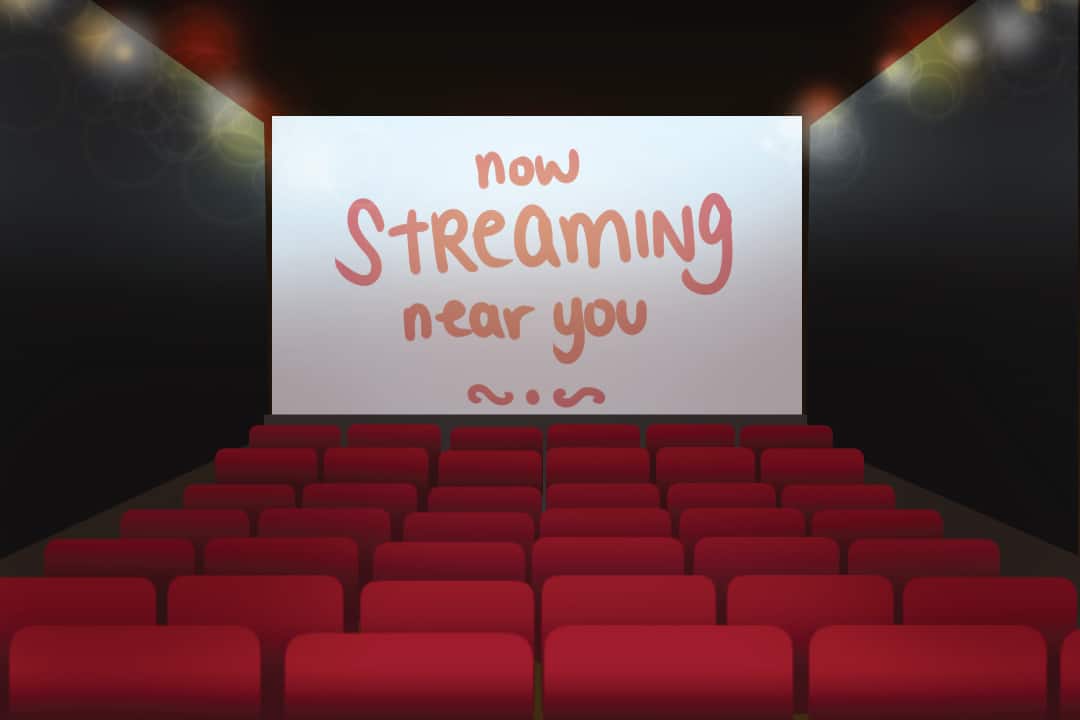Much has happened since the latest James Bond film, No Time to Die, was delayed a couple of weeks ago due to escalation of the COVID-19 pandemic. As avoidance of mass gatherings grows, venues like restaurants and movie theatres are shutting down, either by recommendation or order. In the case of movie theatres, many studio films that were poised for release within the next few months have either been heavily pushed back or delayed indefinitely.
Movie theatres have been suffering for a while. With the ubiquity of streaming services — and pirating — making just about everything very easily accessible, it’s no surprise that one might prefer settling into their couch to watch something over taking themselves to a theatre and committing to pure movie-watching time.
Going to the theatre is something you organize in advance and form plans around, and consequently, people are a lot more likely to watch movies when they are events themselves. Hence, the real victim of the death of theatrical releases would not be the blockbusters.
People — including me — show up to new Star Wars movies partially because of a sense of being hooked on a series. This kind of draw can’t be exploited as much in a film without an established place in viewers’ memories. The average American sees one movie a year in theatres, and in all likelihood, that movie is going to be part of a known franchise.
It doesn’t help that theatres lack the glamour and sparkle that they might have once had. Now, given the other ultra-convenient options we’re presented with at every moment, going to a theatre can be a hassle.
The theatre can be too hot or too cold, or you might find yourself walking on floors that are sticky with four-hour-old spilled soda. One bad audience member talking a little too loudly or checking their phone in the row in front of you can ruin the whole experience.
On top of all of this, they’re also expensive. Since theatres are dependent on big releases, studios are able to strongarm them into taking smaller portions of ticket sales in exchange for the rights to their films, so they have to find other ways to make a profit.
Ticket prices seem to be constantly rising, and concession prices are crazy. Stalls selling actual food in addition to popcorn are becoming standard in multiplexes. One Cineplex Entertainment theatre in Toronto is fitted with a pricey virtual reality (VR) area. Cineplex itself also owns arcades and other social and entertainment venues.
Nevertheless, I still like going to theatres. Under the right circumstances, when you’re able to give yourself over to watching the movie without any distractions, it’s far more immersive and rewarding than watching on a TV. Furthermore, the screens and sound systems are usually of higher quality than anything you can buy for your home.
I remember seeing Blade Runner 2049 in theatres and feeling the room tremble with the bass of the soundtrack — even if I could replicate that in my living room, I don’t know if I’d want to. The isolation of the theatre lets the viewer’s experience become focused and nuanced in a way that’s difficult to replicate elsewhere.
I also somewhat enjoy how active the theatre-going experience is. It usually doubles as time to hang out with friends, some of whom I don’t get to see very often otherwise. Not all of the chains’ developments are pointless either.
Having in-theatre options for buying food is convenient, even if they aren’t fine dining. I also tried out the VR area once with a few friends, and it was really fun — I’d do it again in a heartbeat if it wasn’t so expensive.
The crowds can even be fun sometimes, too, especially for big tentpole movies on their opening nights. For movies like Avengers: Endgame or Mission: Impossible — Fallout, it’s easy to feel palpable energy in the room, especially when they do a good job of ratcheting up the tension and excitement of the release, as those ones did. Cheering can be grating when done in abundance, but it can also add to the group experience — especially if you’re not watching an introspective art piece.
Furthermore, the plethora of issues that accompany a theatre experience don’t apply universally. Specialty venues like the Toronto International Film Festival Bell Lightbox or Hot Docs Ted Rogers Cinema rely on a loyal audience to support their programming. This programming is more niche though, so the audience is smaller, even if the movie-going experience there is more pleasant than a trip to a Cineplex.
The Bell Lightbox, for example, has a very comfortable members lounge and is tied to a big and accessible international film festival. These theatres are changing and expanding their repertoire as time goes on, striking a healthy balance between playing emerging new films and established older ones.
So, while theatres are not always attractive to potential movie-watchers, they’re now poised to suffer even more as the COVID-19 pandemic makes it dangerous and irresponsible for them to stay open. Amidst film delays, some studios are putting out some of their spring releases early, encouraging viewers to watch them while trapped at home.
If this becomes a trend, and continues past the eventual subside of the virus-induced measures, it could damage motivation to make a trip to a theatre. Although this recent wave of problems might leave us with fewer theatres in the long run, the theatrical experience will most likely endure.


